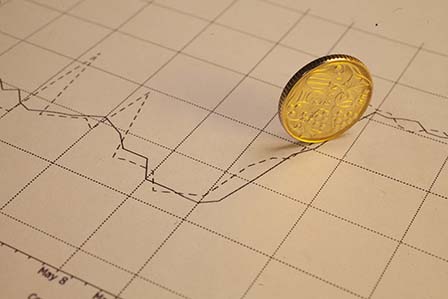Bine ați venit pe pagină oficială a Băncii Naționale a Moldovei!
×
Ai vederea bună și dorești să închizi acest instrument?
Ai vederea bună și dorești să închizi acest instrument?
Anca Dragu, guvernator
Vladimir Munteanu, prim-viceguvernator
A doua zi de miercuri a lunii: 14:00-16:00.
Telefon: +373 22 822 606.
Tatiana Ivanicichina, viceguvernator
A treia zi de miercuri a lunii: 14:00-16:00.
Telefon: +373 22 822 607.
Constantin Șchendra, viceguvernator
A patra zi de miercuri a lunii: 14:00-16:00.
Telefon: +373 22 822 607.
Bine ați venit pe pagină oficială a Băncii Naționale a Moldovei!
Dacă doriţi să expediaţi un mesaj (întrebare sau sugestie) în regim on-line accesați compartimentul "Feedback" din meniul principal din partea de sus a site-ului.
Cele mai populare rapoarte statistice:

Banca Naţională şi membrii organelor de conducere ale acesteia sunt independenţi în exercitarea atribuţiilor stabilite de lege şi nu pot solicita şi nici accepta instrucţiuni de la autorităţile publice sau de la orice altă autoritate.

Banca Naţională informează publicul despre evoluția inflației anuale, strategia de politică monetară,rezultatele analizei macroeconomice, evoluţiei pieţei financiare şi informaţia statistică, inclusiv privind masa monetară, acordarea creditelor, balanţa de plăţi şi situaţia pieţei valutare.

Pentru asigurarea şi menţinerea stabilităţii preţurilor pe termen mediu, Banca Naţională a Moldovei menţine inflaţia (măsurată prin indicele preţurilor de consum) la nivelul de 5.0 la sută anual cu o posibilă abatere de ± 1.5 puncte procentuale, fiind considerat nivelul optim pentru creşterea şi dezvoltarea economică a Republicii Moldova pe termen mediu.

Stabilitatea financiară se realizează prin consolidarea rezilienței sistemului financiar, limitarea efectului de contagiune și diminuarea acumulării de riscuri sistemice, contribuind, astfel, la sustenabilitatea sectorului financiar și creșterea economică.

Banca Naţională a Moldovei, are dreptul exclusiv de a emite pe teritoriul Republicii Moldova bancnote şi monede metalice ca mijloc de plată. BNM pune în circulaţie bancnote şi monede metalice, prin intermediul sistemului bancar.

Banca Naţională este unica instituţie care efectuează licenţierea, supravegherea şi reglementarea activităţii instituţiilor financiare.

Banca Națională supraveghează sistemul de plăţi în Republica Moldova şi promovează funcţionarea stabilă şi eficientă a sistemului automatizat de plăţi interbancare.

Banca Naţională este o persoană juridică publică autonomă şi este responsabilă faţă de Parlament.

BNM publică statistici privind masa monetară, sectorul bancar, balanța de plăți, situația pieței valutare, etc. pentru a asigura transparența în procesul de elaborare și adoptare a deciziilor BNM, a asigura continuitatea în comunicare și predictibilitatea BNM pe piață, pentru sporirea credibilității BNM în calitate de bancă centrală dar și pe piața financiar-bancară din Republica Moldova.
Site-ul www.bnm.md prioritizează securitatea datelor și utilizează cookie-urile pentru îmbunătățirea experienței de navigare și confortul utilizatorului. Acceptul folosirii cookie sporește viteza de lucru a paginii și garantează funcționarea normală a modulelor de prezentare a informațiilor. Refuzul folosirii cookie poate încetini încărcarea site-ului și îngreuna navigarea lină între pagini. Mai multe detalii în Politica de utilizare a cookie-urilor.
Inflation Report no.3, August 2013
The business cycle is the upward and downward movements of levels of GDP and refers to the period of expansions and contractions in the level of economic activities around its long-term growth trend. These fluctuations typically involve shifts over time between periods of relatively rapid economic growth (expansion), and periods of relative stagnation or decline (recession).
Business cycles are usually measured by considering the growth rate of real gross domestic product and these fluctuations in economic activity are not regular or mechanical.
Due to the slow adjustment of nominal rigidities, the economic cycles are possible, so that the monetary discrepancies that may affect only the demand lead to causing fluctuations in economic activity. Fluctuations can be explained by the markets that are not without imperfections and asymmetries. The shocks that can impact business cycles are technological shocks and the aggregate fluctuations are generated by the optimal decisions of businesses and households.
Business cycles present deviations of real output from its long term trend.
Macroeconomic variables can have multiple types of actions on business cycles. Classification of macroeconomic variables in relation to their relationship with business cycles has the following form:
Table no.1. Macroeconomic variables relationship with business cycles
|
Variable |
Direction |
|
Production Industrial production Sustainable industrial goods are more volatile compared to Consumer goods and services |
Procyclical |
|
Expenses
Investments are more volatile than consumption |
Procyclical
|
|
Labor market variables
|
Procyclical |
|
Money supply and Inflation
|
Procyclical |
|
Financial variables
|
Procyclical |
Bulevardul Grigore Vieru nr. 1,
MD-2005, Chişinău, Republica Moldova
© 2023 Banca Națională a Moldovei
Condiții de utilizare


